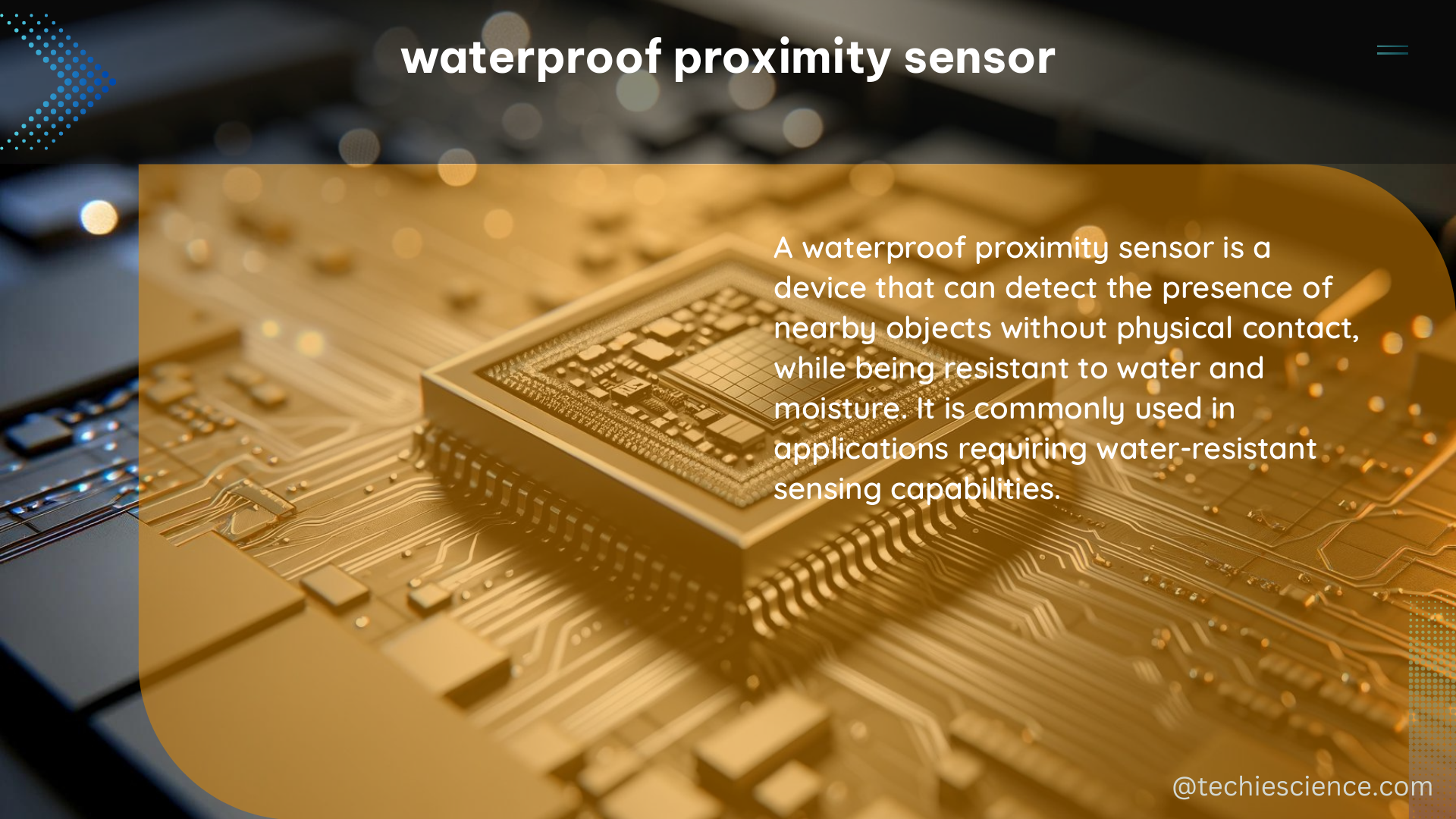Waterproof proximity sensors are essential components in various industrial and automotive applications, providing contactless detection of objects and ensuring reliable operation in harsh environments. These sensors utilize advanced technologies to overcome challenges such as temperature drift, ensuring precise and accurate measurements even in demanding conditions.
Working Principle of Waterproof Proximity Sensors
Waterproof proximity sensors, such as inductive proximity sensors, operate based on the generation of an alternating magnetic field by a coil. When a metallic object enters this field, eddy currents develop, reducing the energy from the oscillator and triggering a binary signal indicating the presence of the object. The strength of the magnetic field and the distance at which the object can be detected are key factors in the sensor’s performance.
Inductive Proximity Sensor Design
Inductive proximity sensors typically consist of the following key components:
- Oscillator Circuit: Generates the alternating magnetic field used for object detection.
- Coil: Produces the magnetic field and senses the changes caused by the presence of a metallic object.
- Sensing Circuitry: Processes the changes in the magnetic field and generates the output signal.
- Housing: Protects the internal components and provides the desired level of waterproofing and environmental resistance.
The design of these components, along with the selection of materials and manufacturing processes, plays a crucial role in the sensor’s performance, reliability, and durability.
Types and Technical Specifications of Waterproof Proximity Sensors

Manufacturers like Festo offer a wide range of inductive proximity sensors designed for various industrial and automotive applications. These sensors come with a variety of technical specifications to meet the specific requirements of different use cases.
Festo Inductive Proximity Sensors
Festo’s inductive proximity sensors are known for their wear-free, easy-to-operate, and high-quality features. Some of the key technical specifications of their sensors include:
| Model | Voltage | Housing Material | Switching Distance | Mounting |
|---|---|---|---|---|
| SIEF | DC or AC | Stainless Steel | Up to 15 mm | Flush |
| SIES-8M | DC | Stainless Steel | Up to 8 mm | T-slot |
The SIEF sensor is designed to be welding field-resistant, with a weld spatter-resistant housing and LED status indicator, making it suitable for harsh industrial environments. The SIES-8M, on the other hand, is specifically designed for position detection on electric axes and grippers with T-slot mounting.
Temperature Drift Compensation
Temperature drift is a significant challenge in inductive proximity sensors, as changes in the resistance component of the coil can affect the detection precision. To address this issue, researchers have proposed an analog-digital mixed measurement method based on a two-dimensional look-up table.
This method separates the inductance and resistance components of the sensor, allowing for the reduction of temperature drift and the generation of quantitative outputs. By using this approach, the sensor can maintain its accuracy and reliability even in environments with significant temperature fluctuations.
Waterproofing and DIY Considerations
Waterproof proximity sensors are designed to operate in wet or dirty conditions, making them suitable for outdoor and industrial applications. These sensors typically feature robust housing materials, such as stainless steel or high-impact plastics, and specialized sealing mechanisms to prevent water ingress.
Selecting the Right Waterproof Proximity Sensor
When choosing a waterproof proximity sensor for a DIY project, it’s essential to consider the following factors:
- Operating Environment: Determine the level of water exposure, temperature range, and other environmental conditions the sensor will face.
- Sensing Range: Ensure the sensor’s detection range matches the requirements of your application.
- Mounting Options: Consider the available mounting methods, such as flush or T-slot, and ensure compatibility with your project’s design.
- Power Supply: Verify the sensor’s voltage and current requirements to ensure a compatible power source.
- Output Signal: Understand the sensor’s output signal (e.g., digital, analog) and its compatibility with your control system or microcontroller.
By carefully evaluating these factors, DIY enthusiasts can select the most suitable waterproof proximity sensor for their projects and ensure its correct installation and operation.
Conclusion
Waterproof proximity sensors are versatile and reliable components that play a crucial role in various industrial and automotive applications. Understanding their working principle, technical specifications, and waterproofing considerations is essential for DIY enthusiasts looking to incorporate these sensors into their projects.
By leveraging the advanced features and capabilities of waterproof proximity sensors, DIY enthusiasts can create innovative solutions that operate reliably even in harsh environments. This comprehensive guide provides the necessary information to help you select, install, and utilize waterproof proximity sensors effectively in your DIY projects.
References
- Festo. (n.d.). Inductive proximity switches – Sensors. Retrieved from https://www.festo.com/gb/en/c/products/industrial-automation/sensors/inductive-proximity-switches-id_pim129/
- Arduino Community. (2019, March 09). Data Tabulation/Recording of Proximity Sensor using Arduino. Retrieved from https://forum.arduino.cc/t/data-tabulation-recording-of-proximity-sensor-using-arduino/578666
- NCBI. (2015, December 30). An Analog-Digital Mixed Measurement Method of Inductive Proximity Sensor. Retrieved from https://www.ncbi.nlm.nih.gov/pmc/articles/PMC4732063/

The lambdageeks.com Core SME Team is a group of experienced subject matter experts from diverse scientific and technical fields including Physics, Chemistry, Technology,Electronics & Electrical Engineering, Automotive, Mechanical Engineering. Our team collaborates to create high-quality, well-researched articles on a wide range of science and technology topics for the lambdageeks.com website.
All Our Senior SME are having more than 7 Years of experience in the respective fields . They are either Working Industry Professionals or assocaited With different Universities. Refer Our Authors Page to get to know About our Core SMEs.